The Fiber and Composites Manufacturing Facility is involved in a wide breadth of projects. Some representative projects include:
UT, UK to Spearhead $50 Million Advanced Manufacturing Project for Army
he University of Tennessee, Knoxville, the University of Kentucky, and the US Army have announced a new five-year, $50 million advanced manufacturing project aimed at developing the next generation of military equipment.
NSF IUCRC Center for Hybrid Materials Interfacing
The NSF Center for Hybrid Materials joining is a collaboration between UT-Ga Tech-Oakland University for Center for Hybrid Materials Interfacing or dissimilar materials
ACE (America’s Cutting Edge) – Composites Machining and Machine Tools
Click on the link to learn more about the ACE program and opportunities for training and work force development.
Manufacturing Engineering Education Partnership (MEEP)
UT FCMF is engaged with the IACMI led MEEP program on work force development. UT is developing learning modules with hybrid AR/VR and targeted education of the next generation work force.
Materials Maturation for Hypersonics
University of Tennessee (UT) – UT Space Institute (UTSI) – University of Dayton Research Institute (UDRI) are investigating advanced high temperature materials, material architectures, innovative processes and properties. The multi-year program is sponsored by the Air Force Research Laboratory (AFRL), OH.
NIEHS UAB Superfund Research Center (SRC)
The U.S. Environmental Protection Agency (EPA) Superfund site is located in the heart of downtown Birmingham, Alabama. The contaminants of potential concern identified by the EPA in this area include cadmium, arsenic, and manganese, which are being studied in the UAB Superfund Research Center (SRC).
Response to Covid19 needs
The FCMF team is actively contributed to a range of Covid19 needs to service the UT campus, community, State and collaborators. Click on the link to learn more about these activities.
Bioadditive Manufacturing of Large Structures
The research collaboration between Oak Ridge National Laboratory (ORNL) and the University of Maine (UMaine) launches the first large-scale bio-based additive manufacturing program in the US, connecting regional industry and university clusters with national lab resources. UT FCMF students and staff are engaged with the non-AM bioderived materials tasks within this program.
Conformal Cooling in Injection Molding
The Thermal optimization of tooling for injection molding and die casting is critical to run highest quality production, minimize production cycle time, and achieve best production efficiency. A properly engineered, conformal cooled mold contributes between 20% and 40% to the reduction of cycle time. This improvement of productivity increases operating income by more than 40%. In this project, the FCMF team is working with HTS International Corporation in Knoxville, Tennessee, for process optimization studies on an ice scraper part made from a range of polymers. Program: REVV Tennessee.
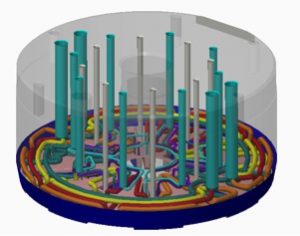
Characterization of Cyanate Ester Resins
Cyanate esters are based on a bisphenol or novolac derivative. Cyanate esters possess a very high glass-transition temperature (Tg) of up to 400 °C, and a very low dielectric constant, providing excellent long-term thermal stability at elevated end use temperatures, very good fire, smoke, and toxicity performance. This property, together with a higher toughness compared to epoxies, also makes it a valuable material in aerospace applications. In this project, the FCMF team is working with Raptor Resins on cyanate ester and cyanate ester prepregs to produce high-temperature composites and their comprehensive thermal and mechanical characterization. Program: REVV Tennessee.
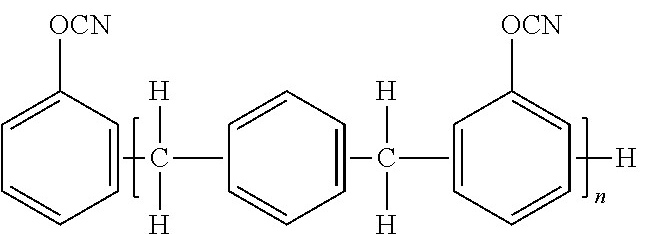
Lightweighting of Industrial Components
Tufting is an industrial process to produce heavy-duty carpets and rugs. The machines operate at tremendous speeds in many cases exceeding 1500 rpm, and the heavy hardware that houses the yarns are subjected to tension/compression in alternate cycles. In this project, the FCMF team in collaboration with the Manufacturing Demonstration Facility at ORNL is working on composite solutions to deliver lightweight solutions to Tuftco, Chattanooga for heavy industrial tufting machine components. Both additive manufacturing and hybrid composites are used in this application. Program: REVV Tennessee.
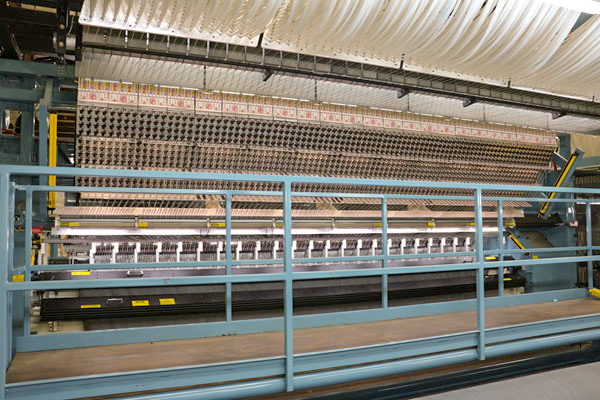
Reduction of CO2 footprint in automotive components
The CAFÉ mandates call for reducing the carbon footprint of automotive components. Composites offer significant lightweight benefits by replacing metal parts with state of the art composite materials and manufacturing. In this IACMI project, the UT team is working with a range of partners to support Volkswagen of America, Chattanooga. Efforts including materials compounding, process optimization, fiber orientation, modeling, structural and class A characterization. Program: IACMI Enterprise project.

Recycling of Composites
A number of projects focus on recycling of composites. These include mechanical shredding, solvolysis, pyrolysis, and thermolysis of composite scrap, out of date prepregs, process waste and rejects. Carbon fiber composite approaches include process studies with discontinuous and continuous fiber forms of recycled fibers. Tows, pellets, mats, and fabrics are repurposed with thermoset and thermoplastic friendly processes including extrusion-compression, injection molding, carding, wet-laid, vacuum infusion and compression molding. The team is also systematically generating a database to design with recycled composites for various fiber loadings, orientation, and process options.
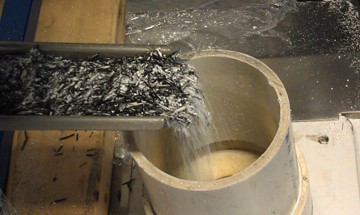
Additive molding tools
Fundamental studies are underway on extrusion deposition of high temperature compounded polymers used in additive manufacturing. The layer-to-layer interface, thermal effects, compatibility of systems, and local material conditions are some aspects of the fundamental study. Tooling produced through polymer additive is then subjected to processing of parts with long fiber and discontinuous fiber mats. The life of the tool for different process temperatures, pressure, and thermal cycles is evaluated through post-mortem and sectioning of the tools at different conditions. Unique resin systems in thermoset additive are also being investigated.
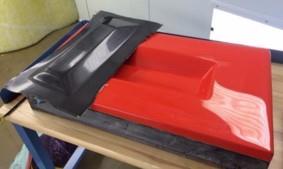
Natural fiber composites
The energy to produce natural fibers is only 10-15% that of production of synthetic fibers such as glass and two orders of magnitude lower than the production of carbon fiber. The low density of natural fibers and their long fiber orientation make it unique for automotive, sporting, infrastructure and industrial applications. Several efforts are underway to evaluate bamboo, kenaf, basalt and other natural fibers in thermoset, thermoplastic and sandwich applications. A number of products have been developed by the team with natural fiber composites.

Embodied energy in composite systems
The holistic energy from material production to the final product is often times difficult to quantify. Very little information exists in accounting for embodied energy in composites production. In this effort, the team is collaborating with IACMI and ORNL to conduct extensive studies on embodied energy in composite manufacturing accounting for state of the art reinforcements, new resin systems, and processes such as fiber injection molding, overmolding, vacuum infusion, thermal stamping, tape placement etc. The embodied energy is systematically calculated at each step of the process, providing life cycle analysis and cost analysis to stakeholders.
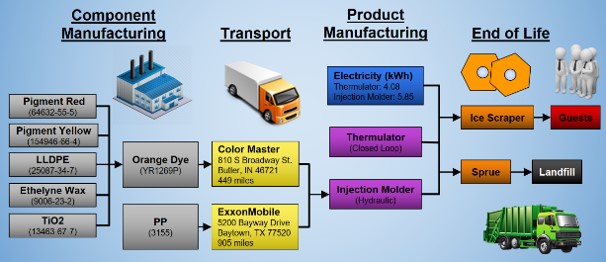
Low-cost carbon fiber database
The Carbon Fiber Technology Facility (CFTF) at ORNL has pioneered the low-cost carbon fiber (LCCF) technology and production of LCCF for non-aerospace applications. While the LCCF is a family of fibers based on the starting precursors, various stages of oxidation, carbonization, and sizing—the properties of these in composite form is not available. In this work, the FCMF team—in collaboration with IACMI and CFTF ORNL—is systematically producing the database on LCCF used as a reinforcement in epoxy, urethane, vinyl ester, and thermoplastic resin systems.
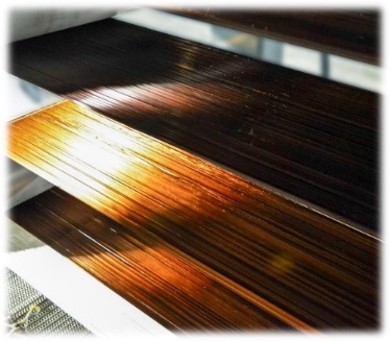
Glass, Carbon and Basalt SMC
The SMC line at UT offers various lab scale compounding options to produce custom SMC with glass, carbon, basalt, and hybrids. Quantities of 5-50 lbs can be readily evaluated for compounded trials with additives, new resin formulation, different fiber length, scales and feed conditions. There are several ongoing efforts in material-process-property relationships with conventional and innovative SMC intermediates. Parallel efforts in modeling of the SMC with Genoa/MCQ are ongoing.
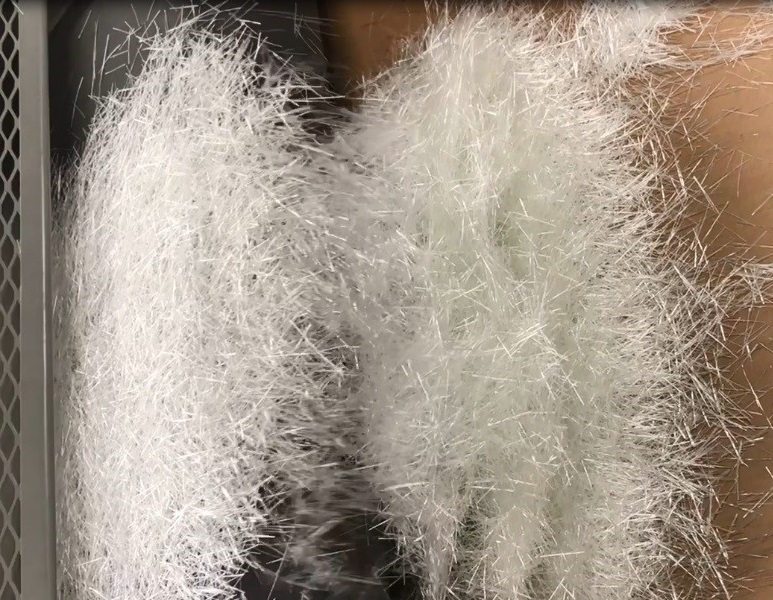
Plasmatreat for interface optimization
Open air plasma offers a significant means of enhancing the surface energy of difficult to adhere surfaces such as polypropylene, polyethylene etc. Plasmatreat offers unique mechanisms of exposing hydroxyl groups on the surface to increase the bond energies. In this work, the team is investigating sandwich composites with olefin core and fiber reinforced skins, as well as treatment of thermoplastic tapes and fiber surfaces to conduct systematic treatment and post-manufacturing after plasma treatment.
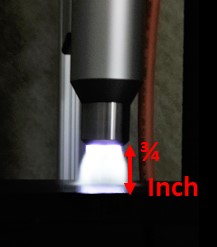
Extrusion-compression overmolding
Injection and compression overmolding of long fiber or engineered thermoplastics over continuous fiber offers means of reducing the part profile, yet obtaining high flexural and impact energy. The processing of tapes in conjunction with discontinuous materials is an emerging field with no guidance at present to the designer. In this effort, the process optimization of glass and carbon fiber thermoplastic tapes for positioning, fiber wash/movement, tension and interface to the substrate are being studied. A number of tools, including interfacial characterization, nondestructive testing, flexure, and interlaminar shear, are properties that are being evaluated.
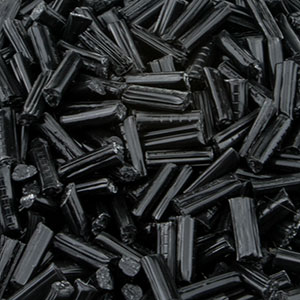
High-temperature thermoplastic composites
Engineered thermoplastic composites are being increasingly used under the hood, and in demanding environments for the military, industrial and aerospace applications. The high temperature static and fatigue response of these being evaluated for a range of properties such as tension, compression, static indentation ILSS and impact response. The failure modes at high temperature are also being evaluated.
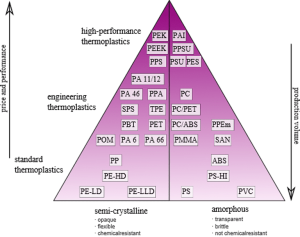
Dissimilar materials joining
The next generation vehicle systems comprise multi-materials such as AHSS, HSLA steels, aluminum alloys, carbon and glass fiber thermoset and thermoplastic composites. Joining of these materials is critical for designing with multi-materials. A number of approaches are being investigated including interface engineering, thermoplastic polyurethane systems, mechanical and chemical methods, and characterization and modeling of the joints through lap shear at different environments.

Nondestructive evaluation of additive and multi-scale composites
Comprehensive NDE efforts for additive composites, discontinuous, continuous and hybrid composites is ongoing. Various methods—including phase array ultrasonics, vibration NDE (damping, frequency, mode shapes), acoustic emission, thermal imaging, and digital image correlation (DIC)—are being used to detect voids, disbonds, delamination, fiber breakage, uncured resin and fiber misalignment.
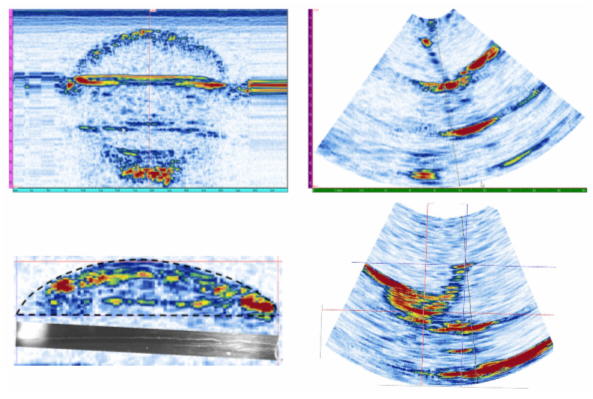
Hydroforming of composite laminates
Hydroforming represents fast forming of sheet metal and thermoplastic composites. The study includes developing ‘forming limit diagrams’ analogous curves for rapid forming of hydroformed materials. This establishes the wrinkling tearing, local wall thinning and compaction of thermoplastic and sheet metal materials. These studies will extend into recycling mats and sheet forms of various polymer-fiber combinations.
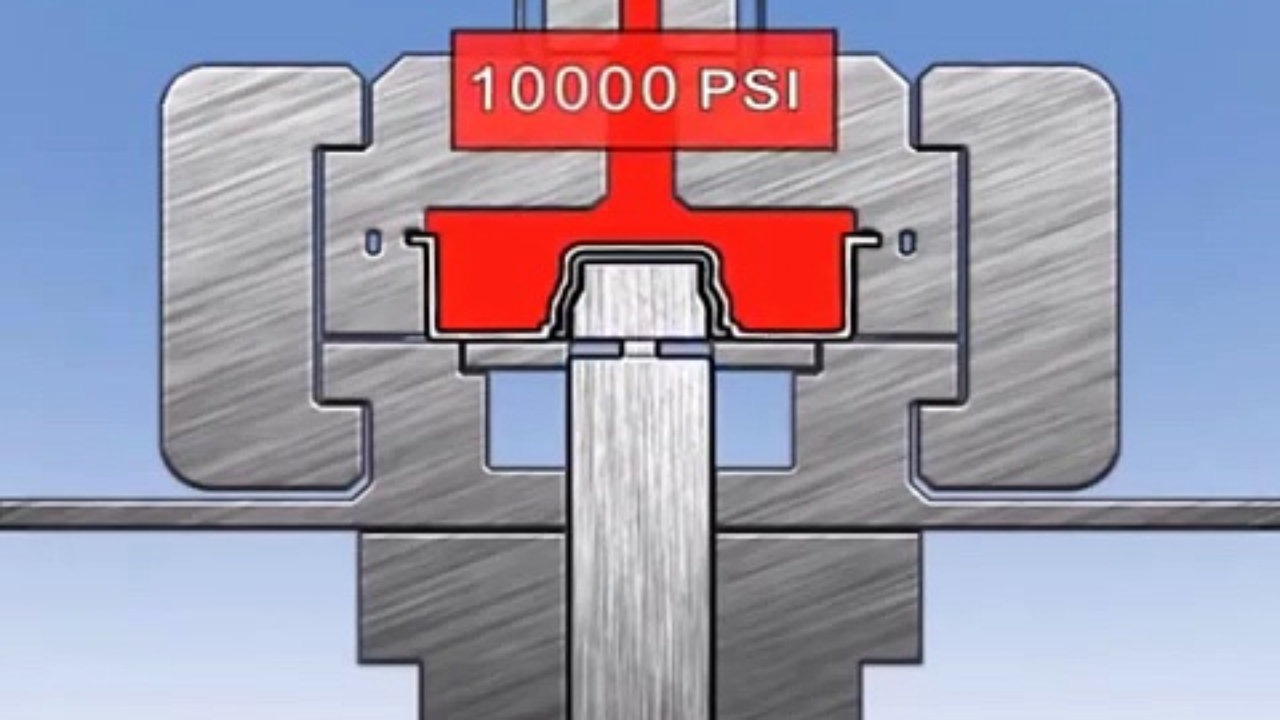
Wet laid thermoplastic mats
Fundamental and applied work on process optimization of discontinuous fiber mats made through wet laid methods are underway. The prediction of the flow conditions, fiber lengths, dispersing and flocculants, fiber sizing are some of the parameters of the study. Analytical models validated through fiber distribution imaging are developed. The studies have applied to ‘only’ carbon and to blended carbon-thermoplastic fibers mats. The produced mats are compression molded, vacuum infused, hydroformed etc.

Inserts for Pre-cast concrete
The FCMF team is collaborating with the Building Technologies team at ORNL on this effort. Presently steel lifting and erection inserts are used to lift pre-cast concrete walls and handle them in installation. The insert is typically molded during the concrete casting. Metal inserts present problems of thermal loss in the panels when connected in building structures. The current work focuses on composite inserts that can bear the design loads of lifting concrete walls/panels. A number of designs for erection and lifting inserts have been developed, modeled, and validated.
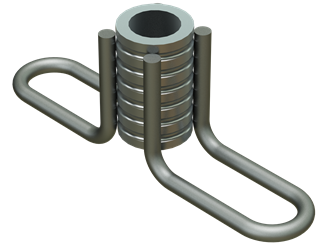
High insulating damage resistant window frames
The FCMF team is collaborating with the Building Technologies team at ORNL on this effort. Presently residential and commercial window frames are produced with wood, aluminum or thermoset glass fiber reinforced composites. The present work focuses on thermoplastic window profiles that provide higher energy efficiency, lower production cost through material intermediates, and high damage tolerance against static and aggressive environmental conditions.
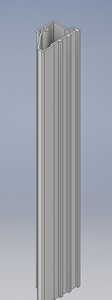
IACMI projects
Other IACMI projects with UT involvement are underway which will be updated frequently on this site. Please visit us again.